Are you struggling to find the perfect patio door size for your home? With so many options available, it can be overwhelming to make the right choice.
Choosing the correct patio door size is crucial for both functionality and aesthetics. In this comprehensive guide, we'll explore standard patio door sizes and types, helping you make an informed decision.
From sliding doors to French patio doors, we'll cover the most common sizes and configurations. You'll also learn about factors to consider when selecting the ideal patio door size for your space.
Standard Patio Door Sizes
When it comes to patio doors, there are several standard sizes available. These sizes cater to various home designs and requirements. Let's take a closer look at the most common options:
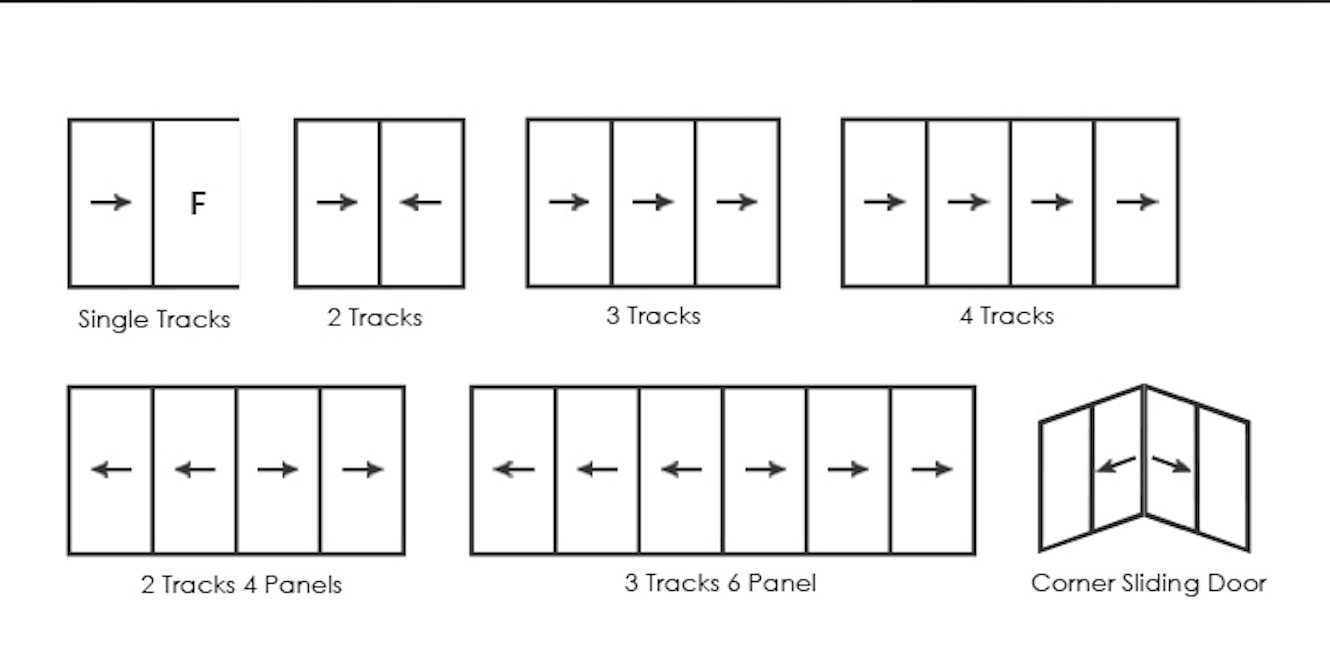
Two-Panel Sliding Doors
Two-panel sliding doors are a popular choice for many homeowners. They offer a sleek and space-saving design. The standard sizes for these doors are:
- Common widths: 60", 72", 96"
- Standard height: 80"
These dimensions provide ample access to outdoor spaces while maintaining a compact profile.
Three-Panel Sliding Doors
If you're looking for a wider opening, three-panel sliding doors might be the perfect fit. They allow for a more expansive view and increased natural light. The typical sizes for three-panel sliding doors are:
- Common widths: 108", 144"
- Standard height: 80"
These sizes are ideal for larger patio areas or for creating a seamless transition between indoor and outdoor living spaces.
Four-Panel Sliding Doors
For even grander openings, four-panel sliding doors are a stunning choice. They offer an impressive expanse of glass and an unobstructed view. The standard sizes for four-panel sliding doors are:
- Common widths: 144", 192"
- Standard height: 80"
These sizeable doors are perfect for expansive patios or for creating a dramatic entrance to your outdoor oasis.
French Patio Doors
French patio doors, also known as hinged patio doors, add a touch of elegance and tradition to any home. They swing open like regular doors, creating a charming entrance. The standard sizes for French patio doors are:
- Width range: 60" to 96"
- Height range: 80" to 96"
The specific size you choose will depend on your home's architecture and the available space.
To summarize, here's a quick reference table for standard patio door sizes:
Door Type | Width Options | Standard Height |
Two-Panel Sliding Doors | 60", 72", 96" | 80" |
Three-Panel Sliding Doors | 108", 144" | 80" |
Four-Panel Sliding Doors | 144", 192" | 80" |
French Patio Doors | 60" to 96" | 80" to 96" |
Remember, while these are standard sizes, it's always best to measure your specific opening to ensure a perfect fit. In the next section, we'll discuss the factors you should consider when choosing the right patio door size for your home.
Factors to Consider When Choosing Patio Door Sizes
Choosing the right patio door size involves more than just picking a standard option. Several factors come into play to ensure the perfect fit for your home. Let's explore these considerations in detail.
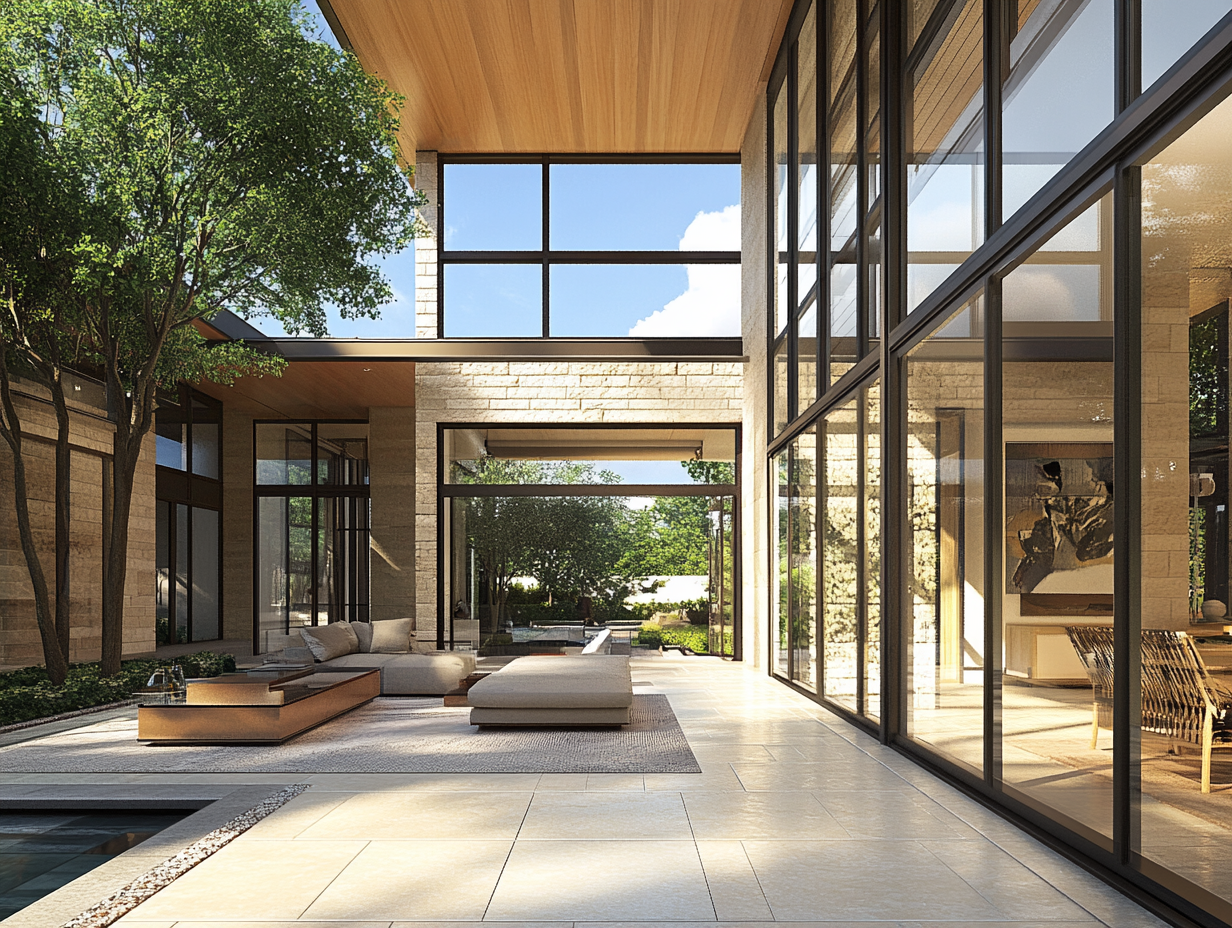
Overall Door Size and Proportions
The overall size and proportions of your patio door should complement your home's architecture and design. Consider the following:
- The height and width of the opening
- The proportion of the door to the wall
- The balance between the door and surrounding windows
These elements work together to create a cohesive and visually appealing look.
Door Frame Size
The door frame size is another crucial factor. It directly impacts the size of the door you can install. Make sure to measure the frame accurately, including the width, height, and depth. This information will guide you in selecting a door that fits perfectly.
Wall Thickness
The thickness of your walls also plays a role in determining the appropriate patio door size. Thicker walls may require a larger door frame and, consequently, a larger door. Take into account the wall thickness when making your measurements and selecting your door.
Glass and Frame Materials
The materials you choose for your patio door's glass and frame can influence the size and overall look. Here are some common options:
Glass Options
- Tempered: Strong and safe, breaks into small pieces if shattered
- Low-E: Reduces heat transfer and UV rays
- Insulated: Provides better energy efficiency
- Laminated: Offers increased security and sound reduction
- Obscured, frosted, or tinted: Provides privacy
- Reflective: Reduces glare and heat gain
- Transparent: Allows maximum light transmission
- Patterned/textured: Adds decorative elements
Frame Materials
- Aluminum: Durable, low-maintenance, and affordable
- Fiberglass: Strong, energy-efficient, and resists weathering
- Steel: Secure, long-lasting, and offers a modern look
- Wood: Classic, warm, and can be painted or stained
Consider the properties and aesthetics of each material to find the best fit for your home.
By taking into account the overall door size, proportions, frame size, wall thickness, and glass and frame materials, you can make an informed decision when selecting your patio door size. In the next section, we'll guide you through the process of measuring for your patio door.
Measuring for Patio Doors
Before you can choose the perfect patio door, you need to measure your space accurately. This step is crucial to ensure a proper fit and smooth installation. Let's walk through the process of measuring for your patio door.
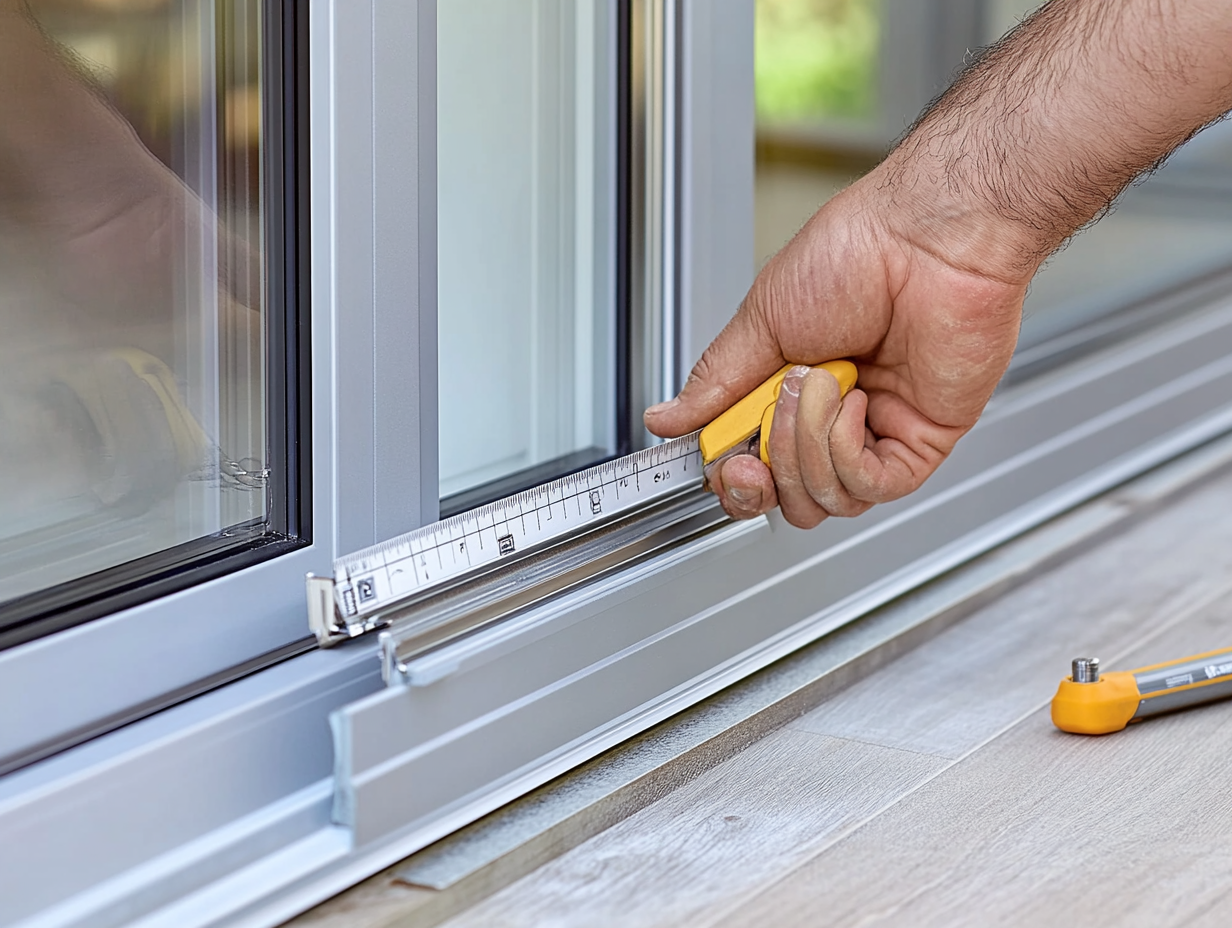
Importance of Accurate Measurements
Accurate measurements are essential for several reasons:
- They ensure your new door fits properly
- They help avoid costly mistakes and delays
- They contribute to the door's overall performance and energy efficiency
Take your time and measure carefully to get the best results.
Measuring the Width
To measure the width of your patio door opening:
1. Measure at the top, middle, and bottom of the opening
2. Record the smallest of these three measurements
3. This is the width you'll use when selecting your door
Remember, it's important to use the smallest measurement to ensure a snug fit.
Measuring the Height
Measuring the height is similar to measuring the width:
1. Measure the height on both sides and in the center of the opening
2. Record the smallest of these three measurements
3. This is the height you'll use when selecting your door
Again, using the smallest measurement ensures your door will fit properly.
Measuring the Door Frame Depth
Don't forget to measure the depth of your door frame. This is the distance from the inside of your home to the outside. Make sure to account for any trim or molding that may affect the depth. The frame depth is important for ensuring your new door sits flush with the wall.
Allowing for Tracks or Rails
If you're installing a sliding patio door, you'll need to account for the space required for the tracks or rails. These components allow the door to slide smoothly and securely. Make sure to factor in this additional space when measuring and selecting your door.
Ensuring Squareness of the Opening
Finally, check the squareness of your patio door opening. Measure diagonally from corner to corner in both directions. If the measurements are equal, your opening is square. If not, you may need to make adjustments during installation to ensure your door operates properly.
By following these measuring guidelines, you'll be well on your way to selecting the perfect patio door size for your home. In the next section, we'll discuss the rough opening size for patio doors and why it matters.
Rough Opening for Patio Doors
When installing a patio door, it's crucial to understand the concept of a rough opening. This is the framed opening in your wall where your patio door will be installed. Let's dive into the details.
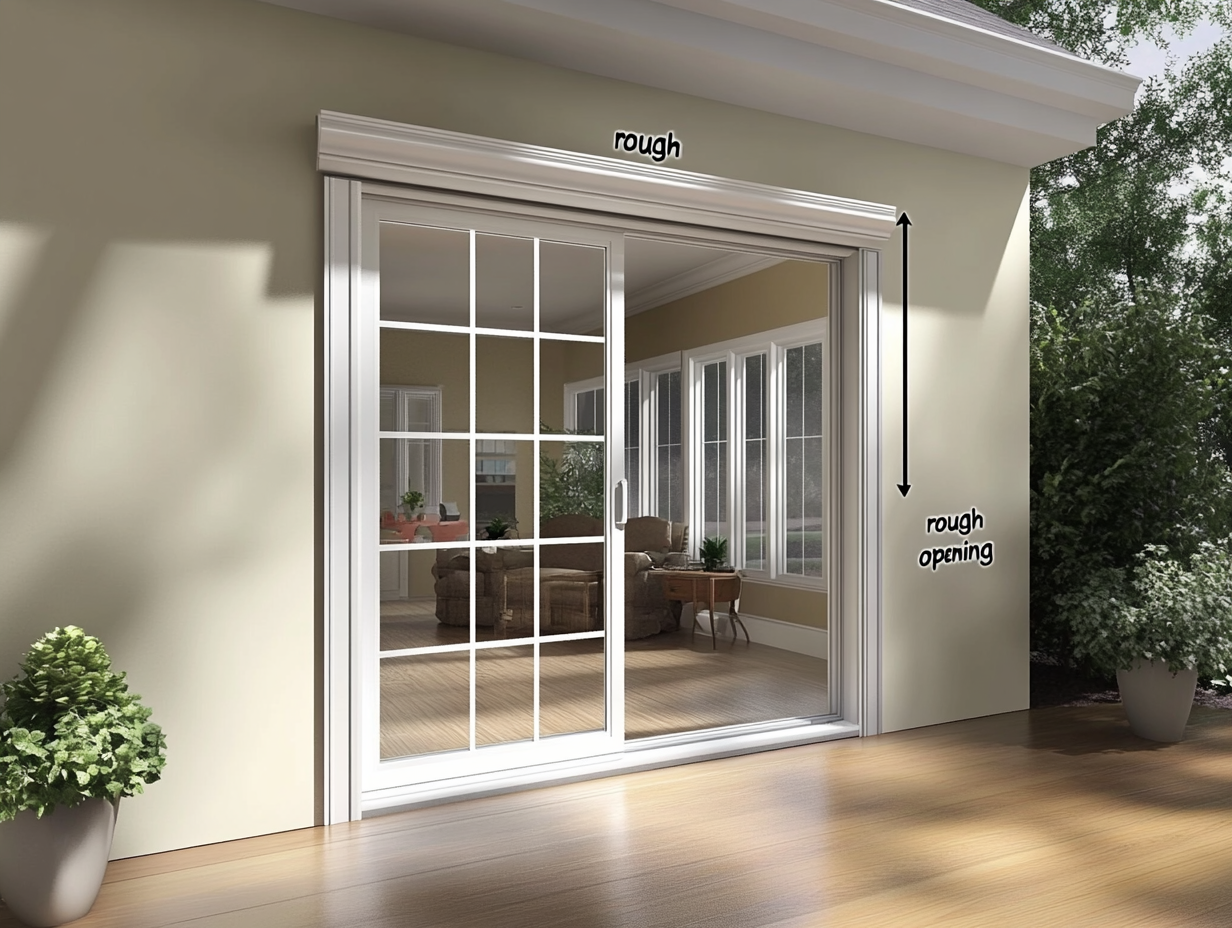
Definition of Rough Opening
A rough opening is the space left in a wall after framing is complete but before the door is installed. It's slightly larger than the actual door size to allow room for adjustments during installation.
Importance of Correct Rough Opening Size
Getting the rough opening size right is essential because:
- It ensures your patio door fits properly
- It allows for proper insulation and weatherproofing
- It prevents issues with opening and closing the door
Measuring your rough opening accurately is key to a successful patio door installation.
Rough Opening Sizes for Common Patio Door Types
The rough opening size varies depending on the type of patio door you're installing. Here are some common examples:
1. Sliding Patio Doors:
- Rough opening width: Approximately 62"
- Rough opening height: Approximately 82"
2. French Patio Doors:
- Rough opening width: Approximately 62"
- Rough opening height: Approximately 82"
3. Bifold Patio Doors:
- Rough opening width: Approximately 146"
- Rough opening height: Approximately 82"
Keep in mind that these are general guidelines. Always refer to your specific door's manufacturer instructions for the exact rough opening requirements.
When framing your rough opening, make sure to:
- Use proper framing techniques
- Ensure the opening is square and level
- Leave enough space for shimming and adjustments
A well-prepared rough opening sets the stage for a successful patio door installation. In the next section, we'll explore how the size of your patio door can impact its cost.
Sliding Door Size vs. Cost
When choosing a patio door, cost is often a major consideration. The size of your sliding door can significantly impact its price. Let's explore the factors that influence the cost and compare prices for different door sizes.
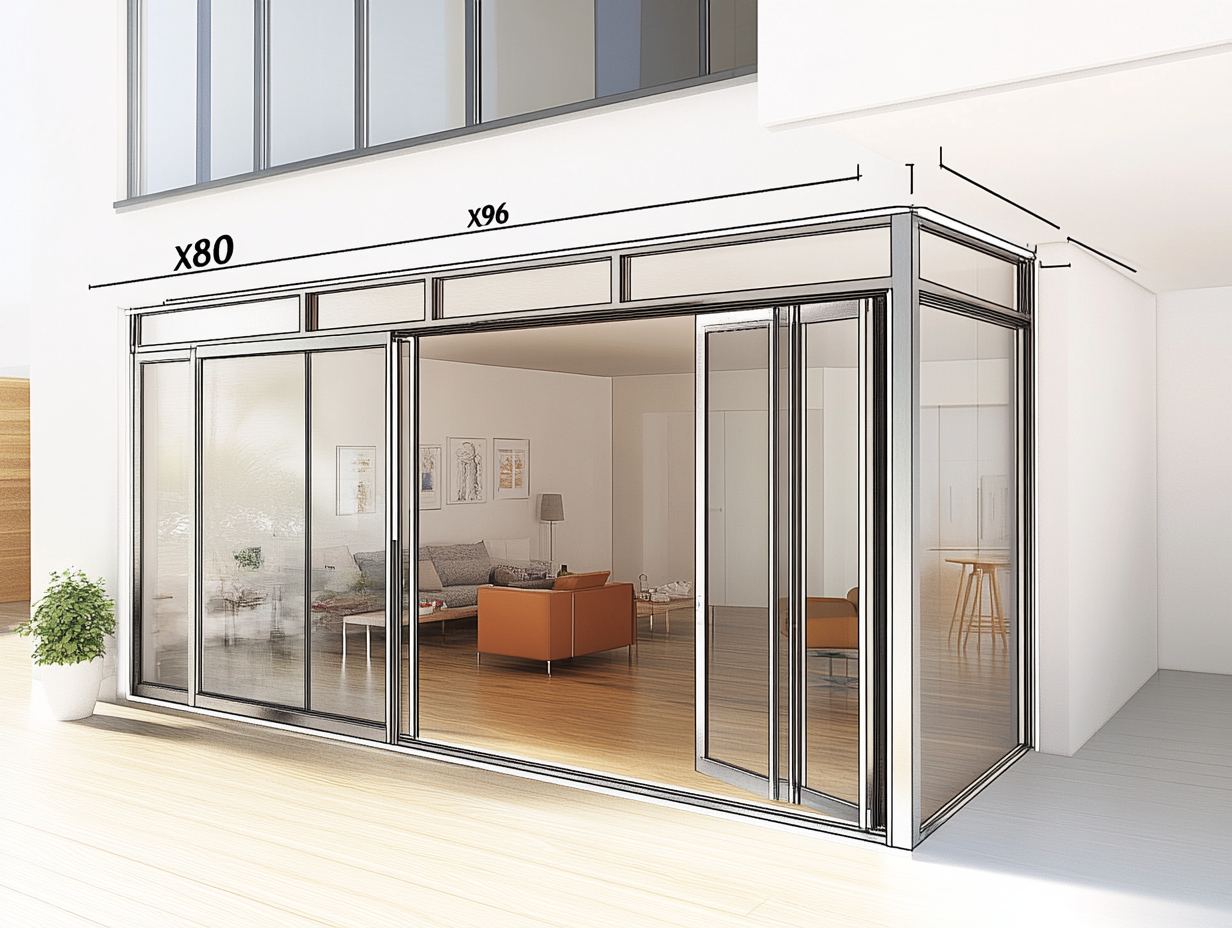
Factors Influencing Cost
Several elements contribute to the overall cost of a sliding patio door:
1. Size: Larger doors require more materials, which increases the price.
2. Material: The type of material you choose (e.g., vinyl, aluminum, wood) affects the cost.
3. Glass Type: Upgraded glass options like Low-E or tempered glass can add to the expense.
4. Installation: Professional installation costs vary based on the complexity of the job.
5. Custom Features: Personalized designs or additional features can significantly increase the price.
Keep these factors in mind as you evaluate the cost of different sliding door sizes.
Cost Comparisons Between Different Sizes
To give you a better idea of how size affects cost, let's compare some common sliding door configurations:
1. Two-Panel Sliding Doors:
- Smaller sizes (60" x 80") start around $500
- Larger sizes (96" x 96") can cost up to $2,500
2. Three-Panel Sliding Doors:
- Prices range from $1,500 to $3,500, depending on size and features
3. Four-Panel Sliding Doors:
- Expect to pay up to $5,500 for these expansive doors
4. Accordion-Style Doors:
- These unique, space-saving doors can cost up to $14,000
5. Bathroom Sliding Doors:
- Compact sizes (24" x 80") start around $150
- Larger sizes (36" x 80") can cost up to $500
6. Kitchen Sliding Doors:
- Prices range from $300 to $1,600, depending on size and style
Remember, these are general price ranges. The actual cost will depend on the specific materials, features, and installation requirements of your project.
Door Type | Approximate Price Range |
Two-Panel Sliding Doors | $500 - $2,500 |
Three-Panel Sliding Doors | $1,500 - $3,500 |
Four-Panel Sliding Doors | Up to $5,500 |
Accordion-Style Doors | Up to $14,000 |
Bathroom Sliding Doors | $150 - $500 |
Kitchen Sliding Doors | $300 - $1,600 |
As you can see, the size of your sliding door plays a significant role in its overall cost. However, it's important to balance your budget with your functional and aesthetic needs. In the next section, we'll discuss how to choose the right patio door size for your specific home and lifestyle.
Choosing the Right Patio Door Size for Your Home
Selecting the perfect patio door size involves more than just picking a standard option. It requires careful consideration of your space, needs, and lifestyle. Let's explore how to choose the ideal patio door size for your home.
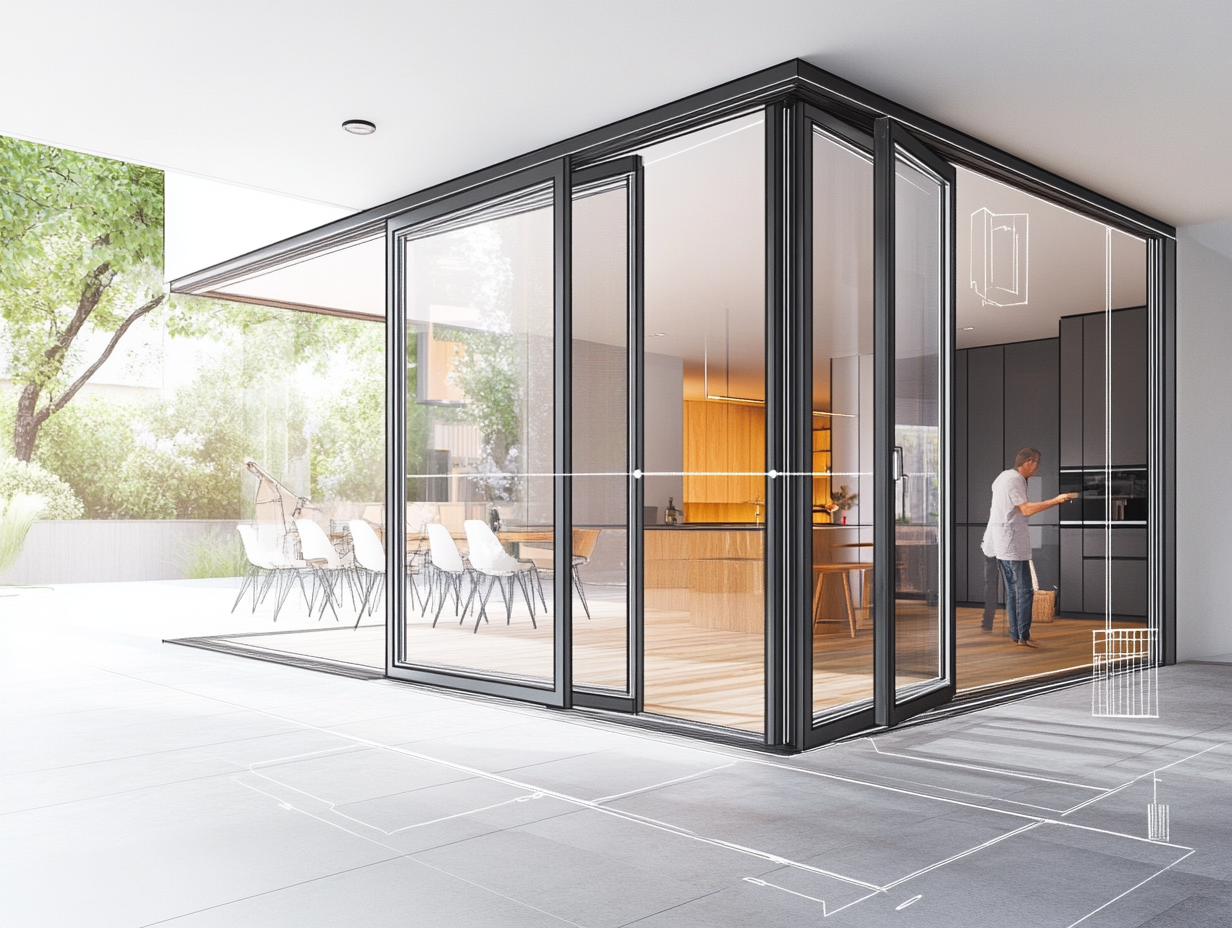
Assessing Your Space and Needs
Before deciding on a patio door size, assess your space and needs:
1. Room Functionality and Layout:
- Consider how the room will be used
- Think about furniture placement and traffic flow
- Determine if the door will serve as a main entrance or a secondary access point
2. Height and Width Requirements:
- Measure the available space for the door
- Take into account any existing architectural features or constraints
- Ensure the door size complements the room's proportions
3. Considerations for Different Rooms:
- Bedrooms: Prioritize privacy and energy efficiency with smaller or frosted glass doors
- Dining Rooms: Opt for wider doors to facilitate easy movement and natural light
- Living Rooms: Consider larger doors or multi-panel options to create a seamless indoor-outdoor flow
Take the time to evaluate your space and needs carefully. This will help you narrow down your patio door size options.
Working with Professionals for Accurate Measurements
While it's possible to measure your patio door opening yourself, working with a professional can ensure accuracy and prevent costly mistakes. Here's why:
- Professionals have the tools and expertise to measure precisely
- They can identify potential issues or challenges early on
- They can recommend the best door size and style for your specific needs
When collaborating with a professional, be sure to:
- Communicate your vision and preferences clearly
- Provide them with access to the necessary areas
- Ask questions and voice any concerns you may have
A skilled professional can guide you through the process and help you select the perfect patio door size for your home.
Avoiding Common Measurement Mistakes
To ensure a smooth and successful patio door installation, avoid these common measurement mistakes:
1. Not measuring the rough opening: Measure the actual opening, not the existing door.
2. Forgetting to account for floor height: Consider any differences in floor height between the interior and exterior.
3. Measuring only once: Take measurements at multiple points and use the smallest dimensions.
4. Not considering the door swing: Make sure there's enough room for the door to open and close properly.
5. Ignoring the door frame: Include the frame in your measurements for a precise fit.
By avoiding these pitfalls and working with a professional, you can confidently choose the right patio door size for your home.
In the next section, we'll explore the benefits and considerations of custom patio door sizes.
Custom Patio Door Sizes
While standard patio door sizes work for many homes, sometimes a unique space or specific design preferences call for a custom solution. Let's explore when to consider custom patio door sizes and the benefits they offer.
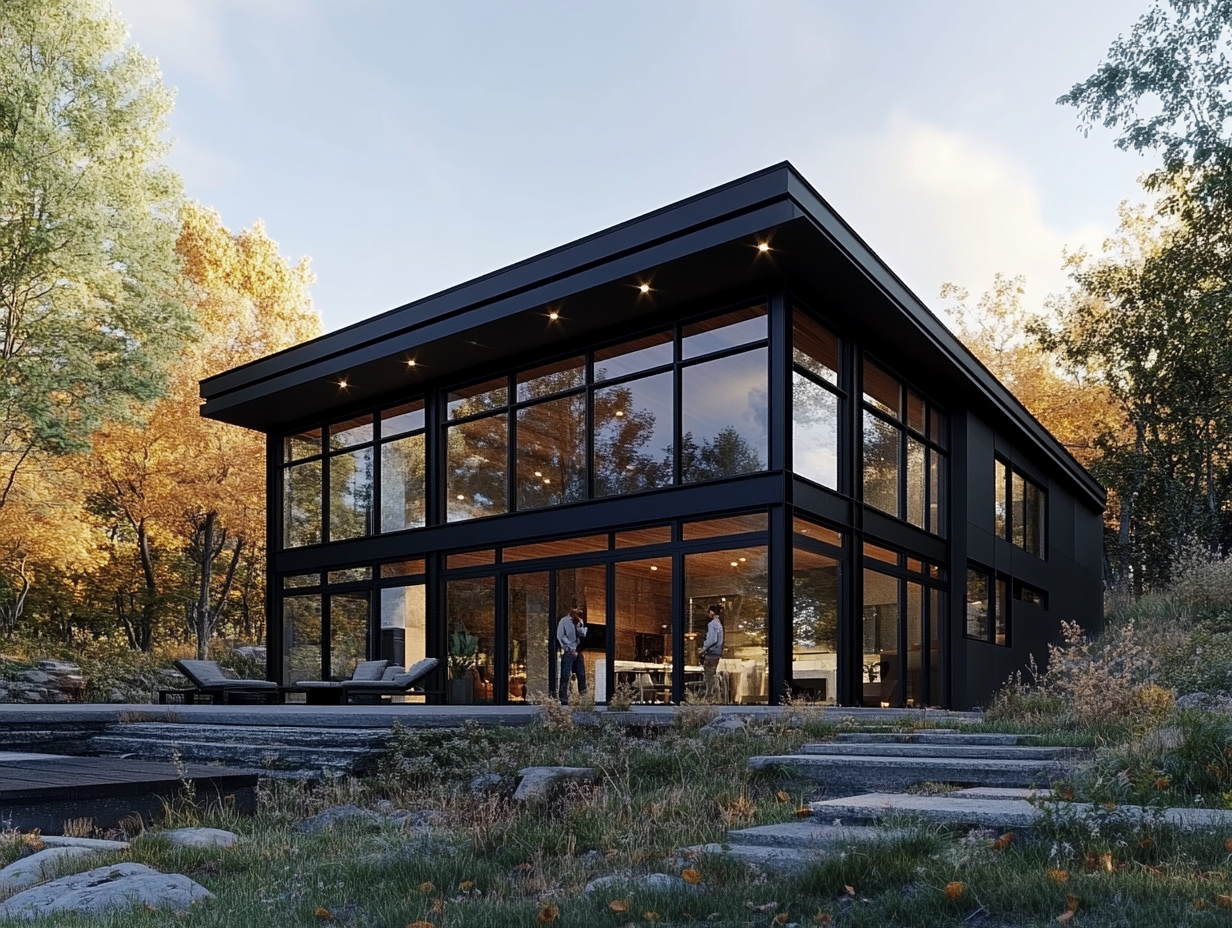
When to Consider Custom Sizes
There are several situations where custom patio door sizes may be the best choice:
1. Unique Spaces:
- Older homes with non-standard door openings
- Architectural features that require a specific door size
- Unusual room layouts or proportions
2. Design Preferences:
- Desire for a grand entrance or oversized doors
- Specific aesthetic vision that standard sizes can't accommodate
- Need for a cohesive look with other custom elements in the home
If your space or design goals don't fit within standard patio door sizes, custom options can provide the perfect solution.
Benefits of Custom Patio Doors
Opting for custom patio door sizes offers several advantages:
1. Personalization:
- Tailor the door size to your exact specifications
- Create a one-of-a-kind look that reflects your style
- Achieve a seamless integration with your home's architecture
2. Increased Property Value:
- Custom features can boost your home's value
- Unique, high-quality doors are a selling point for potential buyers
- Enhance the overall appeal and functionality of your space
3. Optimized Functionality:
- Ensure a perfect fit for your specific needs
- Maximize natural light and outdoor access
- Improve energy efficiency with a precise seal
Custom patio doors allow you to create a space that truly works for you and adds value to your home.
Process of Ordering Custom Patio Doors
If you've decided that custom patio doors are the right choice, here's what you can expect from the ordering process:
1. Consultation:
- Discuss your needs and preferences with a professional
- Review design options and material choices
- Receive guidance on size and configuration possibilities
2. Measurement:
- Schedule an in-home measurement appointment
- A skilled technician will take precise measurements of your space
- Verify all dimensions to ensure a perfect fit
3. Fabrication:
- Your custom doors will be crafted to your exact specifications
- High-quality materials and expert craftsmanship ensure durability
- Lead times may vary depending on the complexity of the design
4. Installation:
- Professional installers will handle the installation process
- Careful attention will be paid to ensure a level, plumb, and secure fit
- Final adjustments and quality checks guarantee smooth operation
By working with experienced professionals and following these steps, you can bring your vision for custom patio doors to life.
Conclusion
Choosing the right patio door size is crucial for both functionality and aesthetics. From standard sizes to custom options, there's a perfect fit for every home.
Careful measurements and professional guidance ensure a seamless installation process. Well-fitted patio doors offer numerous benefits, including improved energy efficiency, increased natural light, and enhanced overall appeal.
By investing time in selecting the ideal size and working with experienced professionals, you can transform your space with beautiful, functional patio doors that add value to your home.
FAQ
Q: What is the standard size of a patio door?
A: Standard patio door sizes vary by type, with common heights ranging from 80" to 96" and widths from 60" to 72" for two-panel doors, 108" to 144" for three-panel doors, and 144" to 192" for four-panel doors.
Q: How do I measure for a patio door?
A: Measure the width at the top, middle, and bottom, and the height on both sides and the center. Use the smallest measurements for each. Also, measure the depth of the door frame.
Q: What is the rough opening size for a sliding glass door?
A: The rough opening for a sliding glass door is typically about 2" wider and 2" taller than the actual door size, allowing for proper installation and adjustments.
Q: How much do different sizes of patio doors cost?
A: Patio door costs vary by size, material, and features. Two-panel doors range from $500 to $2,500, three-panel doors from $1,500 to $3,500, and four-panel doors can cost up to $5,500.
Q: When should I consider custom patio door sizes?
A: Consider custom sizes when you have unique spaces, specific design preferences, or want to maximize functionality and value.
Q: What are the most common glass options for patio doors?
A: Common glass options include tempered, Low-E, insulated, laminated, obscured, frosted, tinted, reflective, transparent, and patterned/textured glass.
Q: What materials are available for patio door frames?
A: Patio door frames are commonly made from aluminum, fiberglass, steel, or wood, each with unique properties and benefits.
English
العربية
Français
Русский
Español
Português
Deutsch
italiano
日本語
한국어
Nederlands
Tiếng Việt
ไทย
Polski
Türkçe
አማርኛ
ភាសាខ្មែរ
Bahasa Melayu
ဗမာစာ
தமிழ்
Filipino
Bahasa Indonesia
magyar
Română
Монгол
қазақ
Српски
हिन्दी
فارسی
Kiswahili
Svenska
українська
Ελληνικά
Suomi
עברית
Dansk
اردو
Hrvatski
Eesti keel
नेपाली
Oʻzbekcha
Azərbaycan dili
Euskara
Беларуская мова
Bosanski
Български
Galego
ქართული
íslenska
Krio we dɛn kɔl Krio
Lietuvių
































